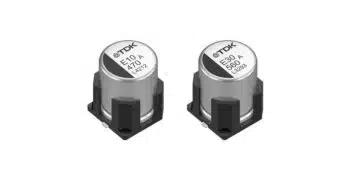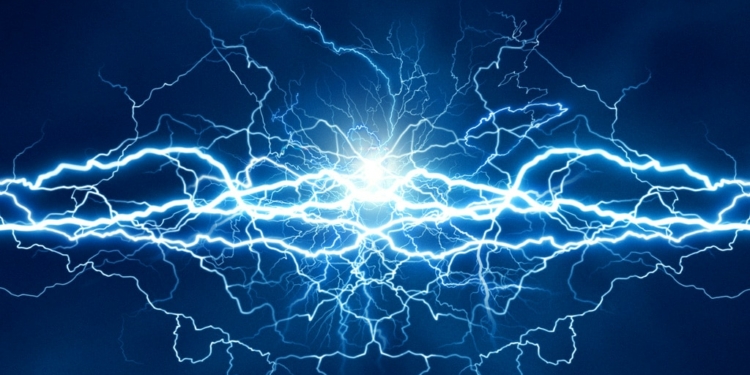Source: Kemet Engineering Center article
by Nick Stephen. What’s scarier than your phone is at 1% battery? When your phone doesn’t start charging after you run for your life to get to a power outlet. Maybe it’s your phone charger or maybe it’s the outlet itself. Have you ever wondered how your devices work once they are plugged in? If the answer is yes then you’re in for a treat, welcome to Electricity 101.
Before we get started let’s talk about the electrical grid. The electric grid is the network through which the power is generated, transmitted, and distributed to consumers. The electrical grid is comprised of 4 components; generating plants, transmission lines, substations, and distribution lines. The electricity is initially produced at generation plants. Transmission lines are the infrastructures created to transport electricity over long distances. The electricity voltage is decreased or increased at a substation using the help of transformers. Lower voltage of electricity is transported to different consumers through the distribution lines.
 Figure 1: Generation, Transmission & Consumption
Figure 1: Generation, Transmission & Consumption
3 Phase Power
Power is generated and distributed in three phase (3-phase). Before we get into 3-phase, it would be beneficial to know about single phase. If you’re not electrically minded, think about single phase power like riding a bicycle where only one leg (phase) is pushing on one pedal. Clearly, it is not the best way to ride a bike. Single phase is used every day by people because it is the most common household power circuit and powers their lights, TV, etc. Typically there’s one neutral wire, and power flows between the power wire (through the load) and the neutral wire.
What is 3-phase power? 3-phase consists of three AC voltages separated from each other by 120 electrical degrees and most commercial buildings are wired with 3-phase. Another way to look at 3-phase power is as a combination of three single-phase circuits that deliver power in a way that it never falls to zero, the load will always be same at any instant. If we only had a single phase, then there would be instances where the load is not the same at every point. Why not 6-phase, 9- phase, 12- phase or some other number of phases? For most applications, anything more than 3-phase is unnecessary. More phases do not always mean better. Think about how a tripod for your camera has a clear advantage over a monopod. A 6 legged or 9 legged devices to hold your camera is not going to make a difference because a tripod is already “ideal”.
There are two types of circuits used to maintain equal load across the three hot wires in a 3-phase system- Delta and Wye. The delta configuration has the 3-phase connected like a triangle, whereas the wye configuration has all three loads connected at a single neutral point. Delta is mainly used for any large motors or heaters that do not need a neutral. Delta is also used in power transmission because it is expensive to run a fourth neutral wire all those miles. That’s why distribution transformers are wired as Delta- Wye. This creates the neutral that allows the transformer to deliver power for single-phase loads.

Figure 2: 3-Phase Wye & 3-Phase Delta
Electrical Grid
So how exactly does the grid work? After electricity is generated through the whole 3 phase we talked about, the voltage is stepped up at a substation, allowing electricity to be transported over long distances. In case you were wondering the electricity is still AC at this point, and no, AC is not air conditioning! AC stands for alternating current. Alternating current is better than direct current for transmission because it minimizes power loss. You want to lose as little power as possible in your transmission lines. The stepped-up electricity is then transported to different destinations with the help of transmission lines. Transmission lines can be either overhead or underground. Once it reaches its destination, another substation steps down the voltage to a level suitable for distribution lines that deliver electricity to consumers.

Figure 3: Distribution
The substations step down voltages based on the consumer requirements. If you refer to the picture above, we can see that our homes are provided with 120V and 240V. The electronics you plug into the wall have other devices inside to step down the voltage even more to meet the requirements. For example, a full wave rectifier shown below has an input of 230V AC and an output of 5V DC (this is an example of what happens inside your phone charger). During distribution of power, capacitors are used for power factor correction (PFC).
 Figure 4: AC to DC Converter
Figure 4: AC to DC Converter
DC links in AC grids
Dc technology provides a more secure and optimized control of a network’s load flow. It also provides quick power restoration in the event of a blackout. An increasing number of DC transmissions embedded in the AC grid will result in a more controllable and precise power exchange. DC technology can provide a more secure and optimized control of the networks load flow. DC transmissions can compensate for fluctuations in power, voltage, and frequency, making it an ideal technology for stabilizing a power system. More DC links will contribute to reduced system losses, increased transmission capacity and improved power quality. DC links often come in form of capacitors. In electricity, DC links capacitors are either film or ceramic.






























